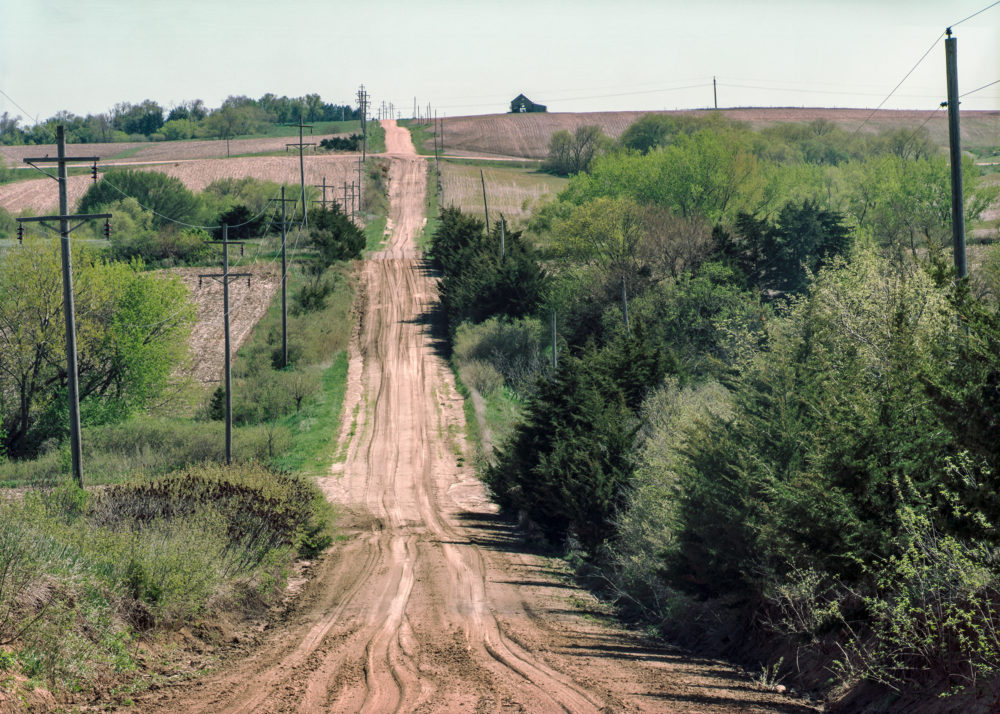After my initial foray…
I began making irregular trips every few weeks to photograph in color using first a large format Deardorff view camera that takes 5” x 7” film. A few months after beginning the project I added a specialty view camera that makes panoramic images in a ratio of one to four on 120 roll film, three 2.25” x 9” frames to a roll.
When I decide to spend a day in the Alps I am usually out the door fairly early in the morning. I never have a precise idea of where I’m going before hitting the highway north. Something will catch my eye or a spot on my big county road maps where I mark where I’ve been before looks empty. I head in that direction and then usually drive around aimlessly the rest of the day just to see what’s there.
The region is quadrated by state highway 79 running north and south and by highway 92 running east and west. When I go up from Lincoln I usually take 79 part of the way to Valparaiso and then get off onto the gravel county roads to go slower and let my photo eyes take over.
I have a few self-imposed rules: never set foot on private property unless invited; do not cross fences or open or go through gates; pull off well to the side of the road when stopped to make pictures; wave when people pass; and take time to visit with anyone who pulls up to ask what I’m doing. As a result every photograph in this collection was made from the public right of way or in an otherwise publicly accessible location. And I’ve enjoyed a few interesting conversations with folk curious about my big camera.
Using a large format view camera…

is an exercise in meditative repetition. Each time I take the camera out it takes a few minutes to make a photograph. There is a precise set of tasks that need to be followed in the proper order and choices to be made:
set up the tripod, mount and unfold the camera, make a lens choice, level everything,
attach the viewing hood, add the lens shade or French flag to control flare,
rough out the composition – which appears upside down and backwards – on the ground glass,
focus with the loupe, refine the composition, re-check the focus, measure the light,
calculate the exposure, set the f-stop and shutter speed, close the lens and cock the shutter,
insert the film holder, pull the dark slide, wait for the breeze to die down, clouds to pass or the light to change,
trip the shutter release, put back the dark slide and remove the film holder,
take everything apart and put the parts back just where they go to be ready for the next time.
Forget to do one thing properly and a $20 sheet of film and processing is wasted plus the
disappointment of losing an image.
Do it right and there is joy in the moment and again later…









